8 Roses Pollinators Love: Best Varieties To Nurture Butterflies & Bees
Roses are not known for their pollinator potential, but the right varieties can help support wildlife in your garden while adding a stunning focal point.
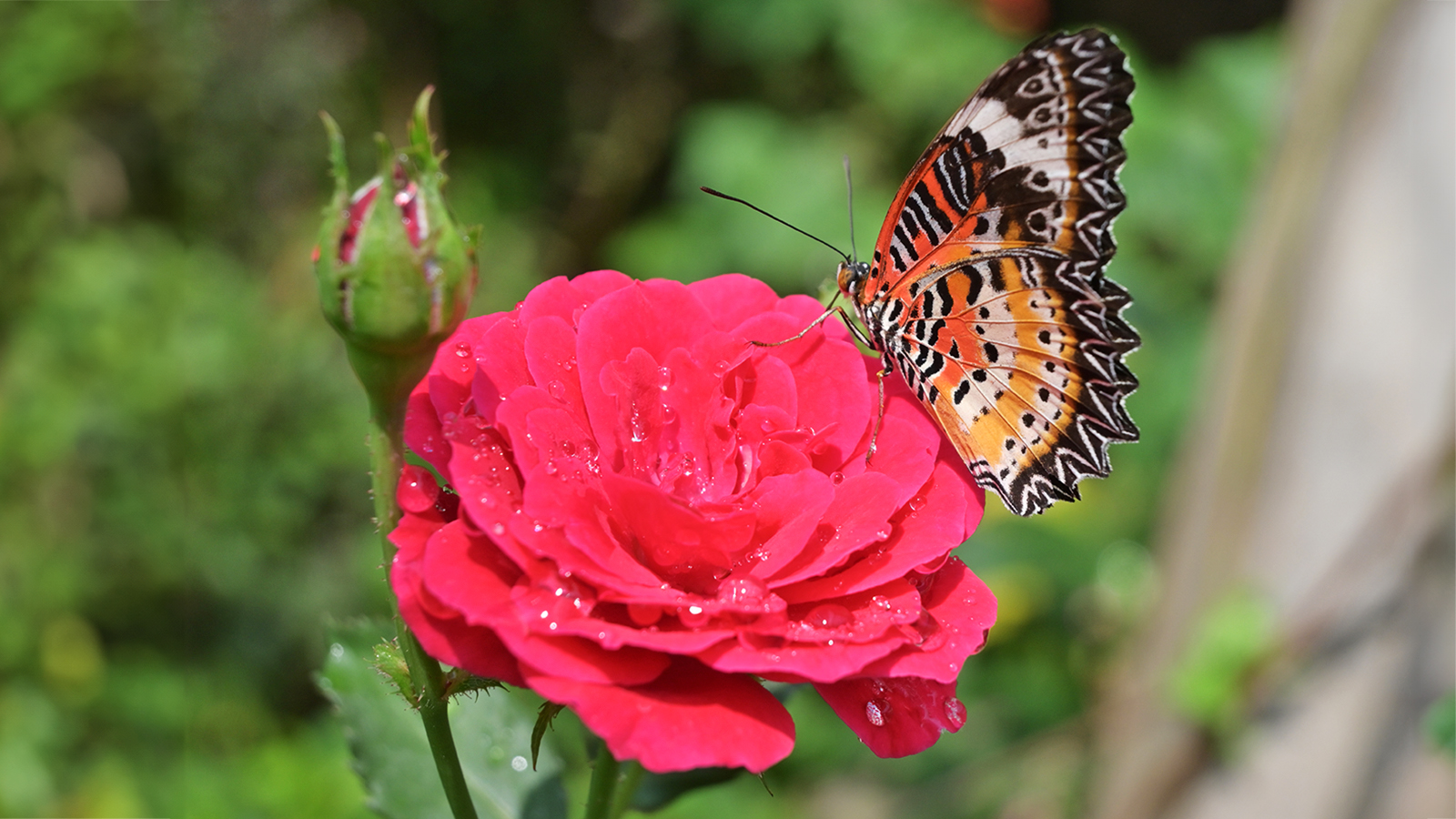

Planting a riot of flowering species is a proven way to bring pollinators into our gardens, but do they like roses? Bees, butterflies, beetles, and other precious pollinators are attracted by colors, scents, and food sources such as nectar. In our home landscapes, we can provide natives, perennials, annuals, and many other plants to stimulate pollinators to take up residence, or at least perform that essential function while they are here. So, where do roses fit in?
There are many types of roses, and their flowers may be single petal, semi-double, or full, with shapes ranging from cupped to flat. As pollinator plants, roses are excellent attractors, but pollinators prefer to feed from those that have their reproductive parts open. That means they don’t seem to visit roses with double and tightly packed petals as much as roses with more exposed parts.
As you select varieties and learn how to grow roses, it is important to consider how the flower form will impact the pollinating community. While flowers with tightly packed petals can still bring in beneficial insects with their scent and color, pollinators may not actually visit the blooms. So diversity and accessibility are key if you want to form a pollinator garden.
Are All Roses Good for Pollinators?
Roses are some of the most loved and spectacular blooms in the garden, both in form and scent. But they aren’t usually included in lists of plants for pollinator gardens. These beneficial creatures seem to have other favorites, in particular native flowering plants. However, roses do attract pollinators, so it's worth planting a few varieties that support them.
Roses are mostly pollinated by bees and butterflies, as well as a few moth species. Honey and bumblebees are the most frequent visitors; they are attracted to roses because of the color and scent, and find the nectar appealing. Butterflies and moths have long tongues or proboscis that can penetrate even double roses. Bees have long tongues, too, but they are no match for the length of butterflies and moths. They are also smaller, which means they need unfettered access to the nectar source.
However, hummingbirds are not partial to roses. They have long beaks and so favor flowers with a tubular shape that can accommodate them.
Best Pollinator-Friendly Roses
Many of the available varieties of roses are hybrids, bred to exhibit certain traits such as larger flowers, a variety of colors, more petals, and better scent. But many of these roses are not pollinator-friendly since the stamens are hidden amid the mass of colorful petals. Insects don’t have hands that can gently pull away the petals to get into the interior; they are delicate creatures who like easy access to their prize. So when selecting the best rose for pollinators, consider how they will reach the stamen to facilitate the transfer of pollen. Open, single-flower varieties are usually the best roses for pollinators.
Sign up for the Gardening Know How newsletter today and receive a free copy of our e-book "How to Grow Delicious Tomatoes".
Here are some of our most suitable rose varieties for attracting these pollinators to your landscape.
1. Rugosa
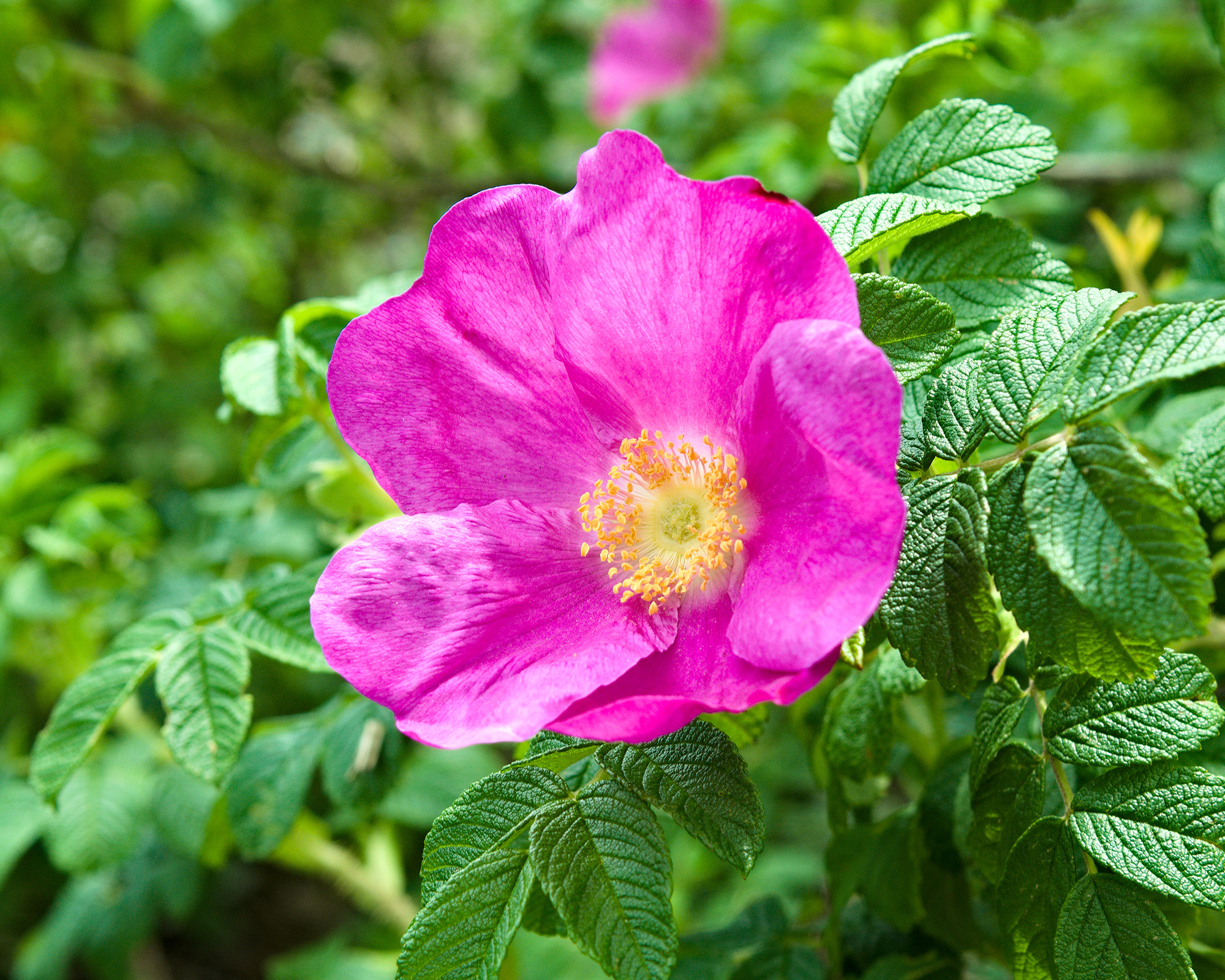
Rugosa roses – often called Japanese roses – have very open petals, and the golden stamens can easily be seen. They come in several colors, including white and magenta – like this Green Promise Farms rugosa rose in the Gardening Know How Shop. After the petals have dropped, they form gorgeous, bright orange rose hips, which are the fruit of the plant. Rugosas are extremely hardy and disease-resistant. They are unfussy about soil as long as it drains well, and even tolerate coastal sites.
2. Bees Paradise Red
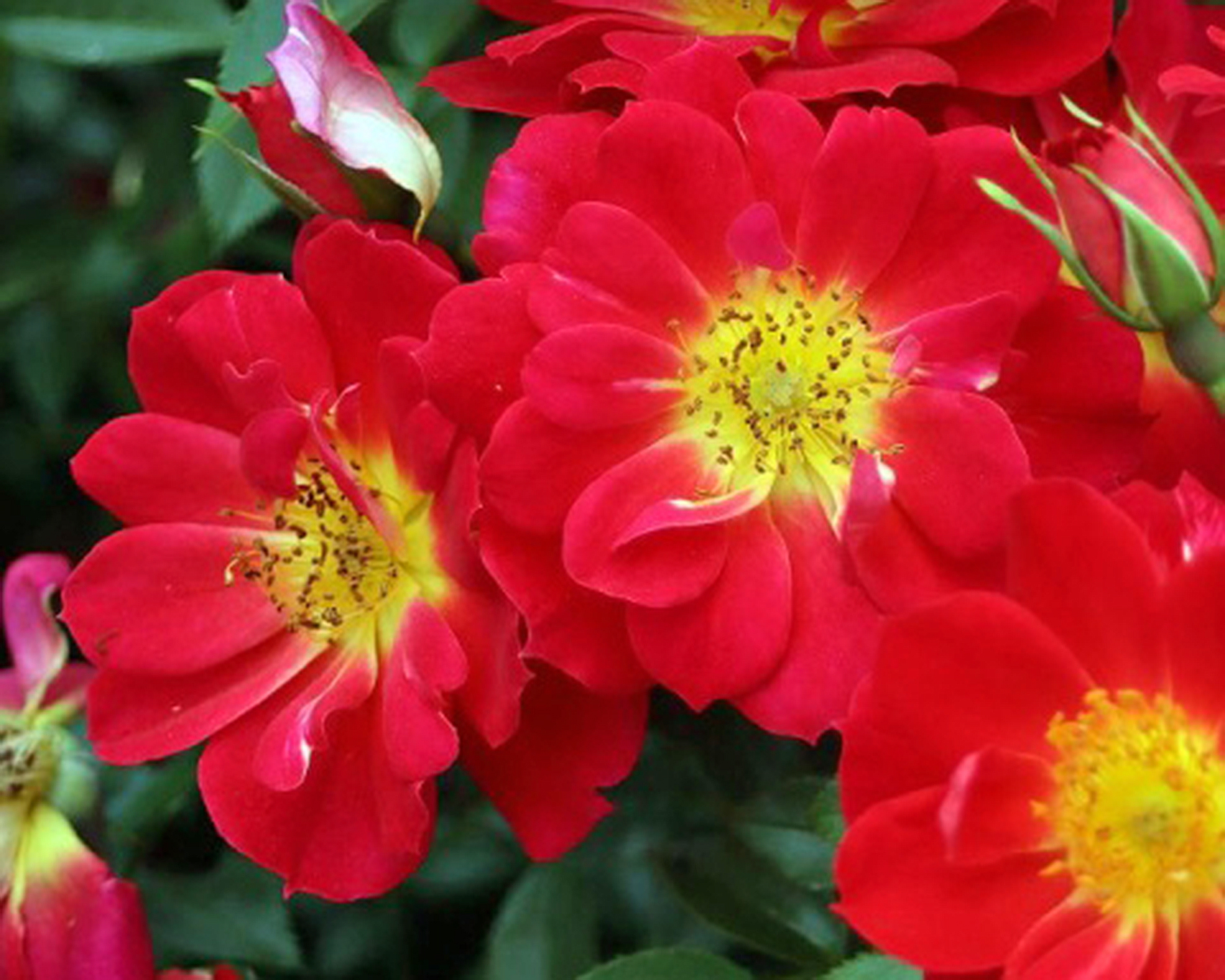
This variety was noted to be covered in bees during trials. The flowers are small, 1 inch (2.5cm), and have open red petals. While Bees Paradise Red is not a fragrant rose, its vibrant color and open nature bring in the bees. This is a miniature rose that rarely gets above 2 feet (60cm). There are several other varieties in the Bees Paradise collection, which was created to provide bee-friendly roses. There are 10 colors of these disease-resistant flowers.
3. Carefree Delight
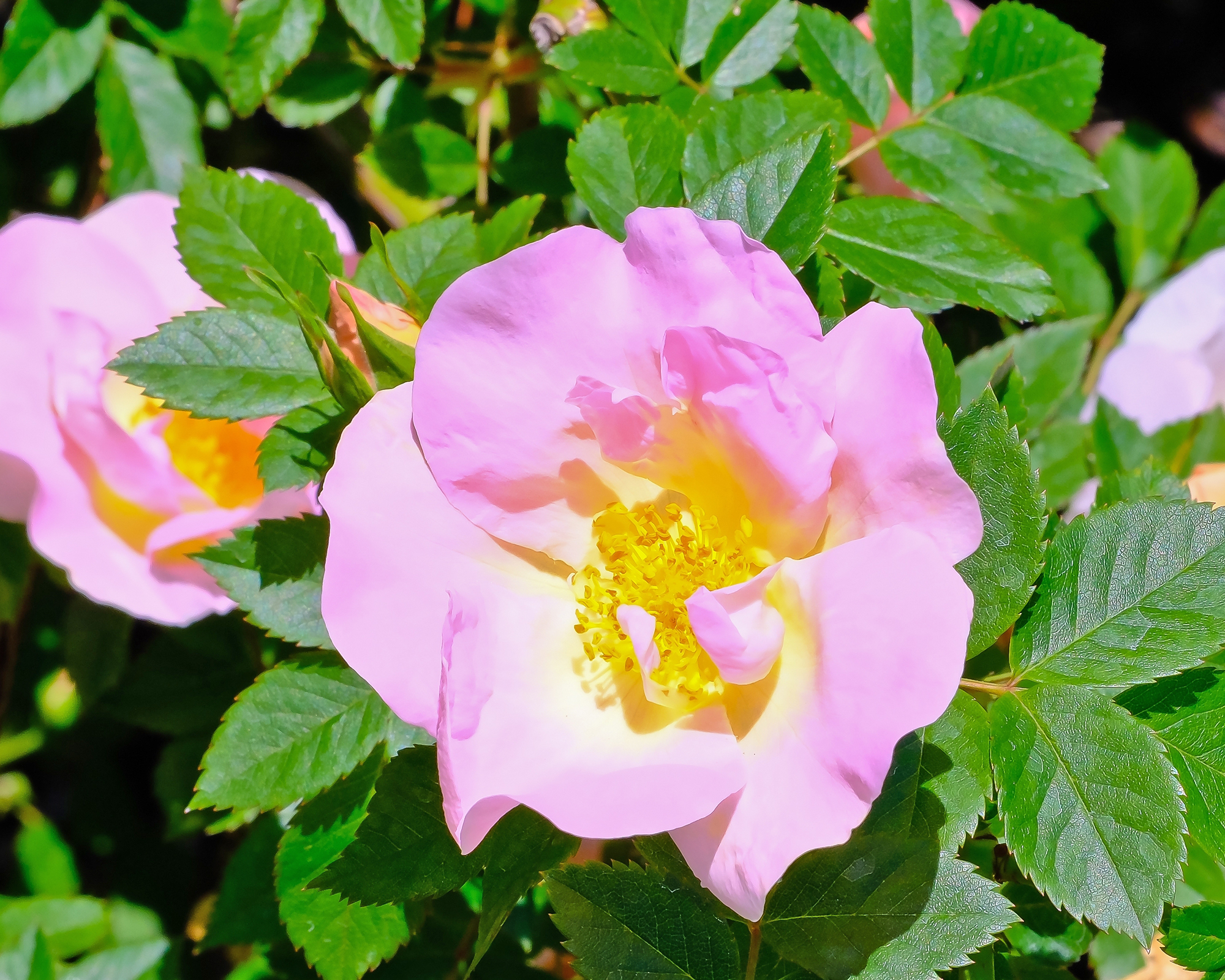
This is a true beauty with slightly cupped, 2-inch (5cm) single petals in soft pink. The bases of the petals are much lighter and give the flower the appearance of having a white eye. The flowers are produced in large clusters at the end of the stem – each cluster can have as many as 10 blooms. Carefree Delight is a larger rose with canes that can grow up to 5 feet (1.5m). Near the end of the season, the plant will be covered with small red hips. You can buy the Carefree Delight rose at Walmart.
4. Pink Drift
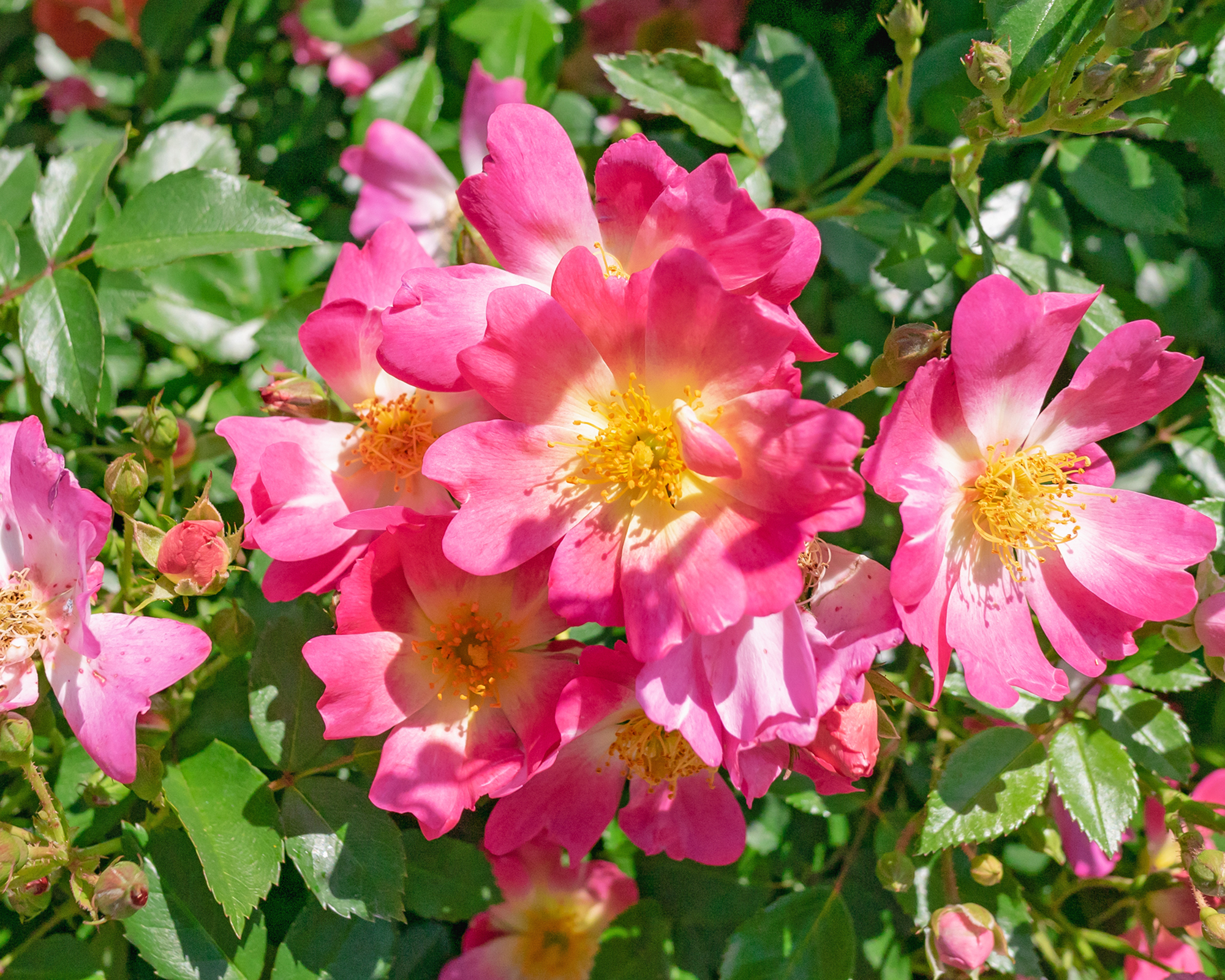
Drift roses come in almost every rose hue and are often used as groundcovers because of their long, arching, low stems. They are a cross between miniature roses and full-sized groundcover plants. They spread, but not as widely as standard groundcover roses. The delightful Pink Drift bears flowers with petals so open that they are almost flat and adorned with a white eye. It blooms from spring into fall, so both you and the pollinators are getting maximum enjoyment over three seasons. The Pink Drift rose is available to buy in the Gardening Know How Shop.
5. Swamp Rose
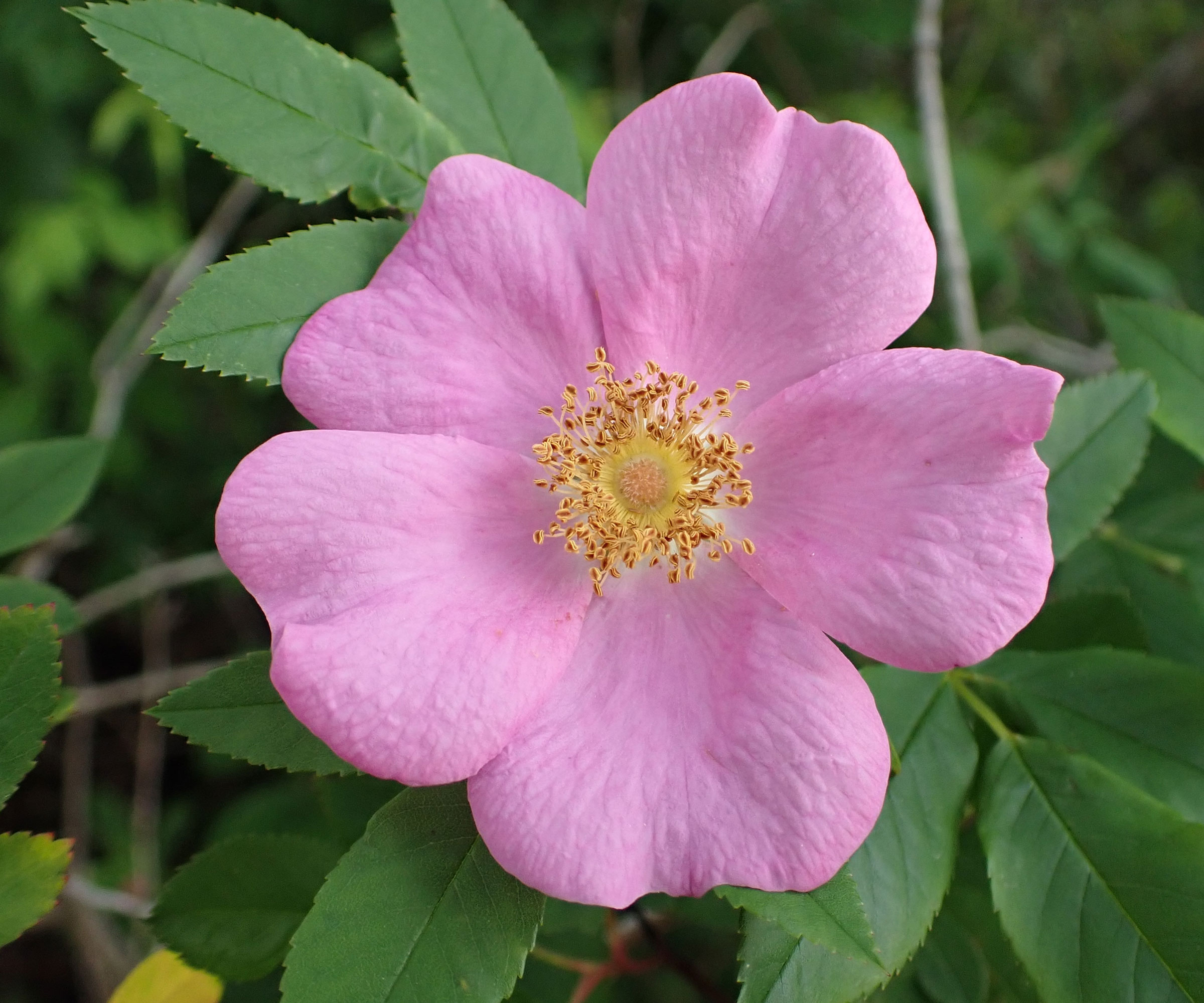
The swamp rose is a native of North America and is familiar to pollinators. It grows naturally in moist soils near waterways and bogs. The plant is fairly compact with arching branches. Flowers are a delicate pink and mostly occur singly, but occasionally in groups of two or three. Bloom time starts in June and can carry on until September. The roses lose their petals and develop red, fleshy hips that are a favorite of wild birds. Unlike most other roses, the swamp rose can be grown from seed fairly easily – you can buy seeds from Amazon.
6. Zephirine Drouhin Climbing Rose
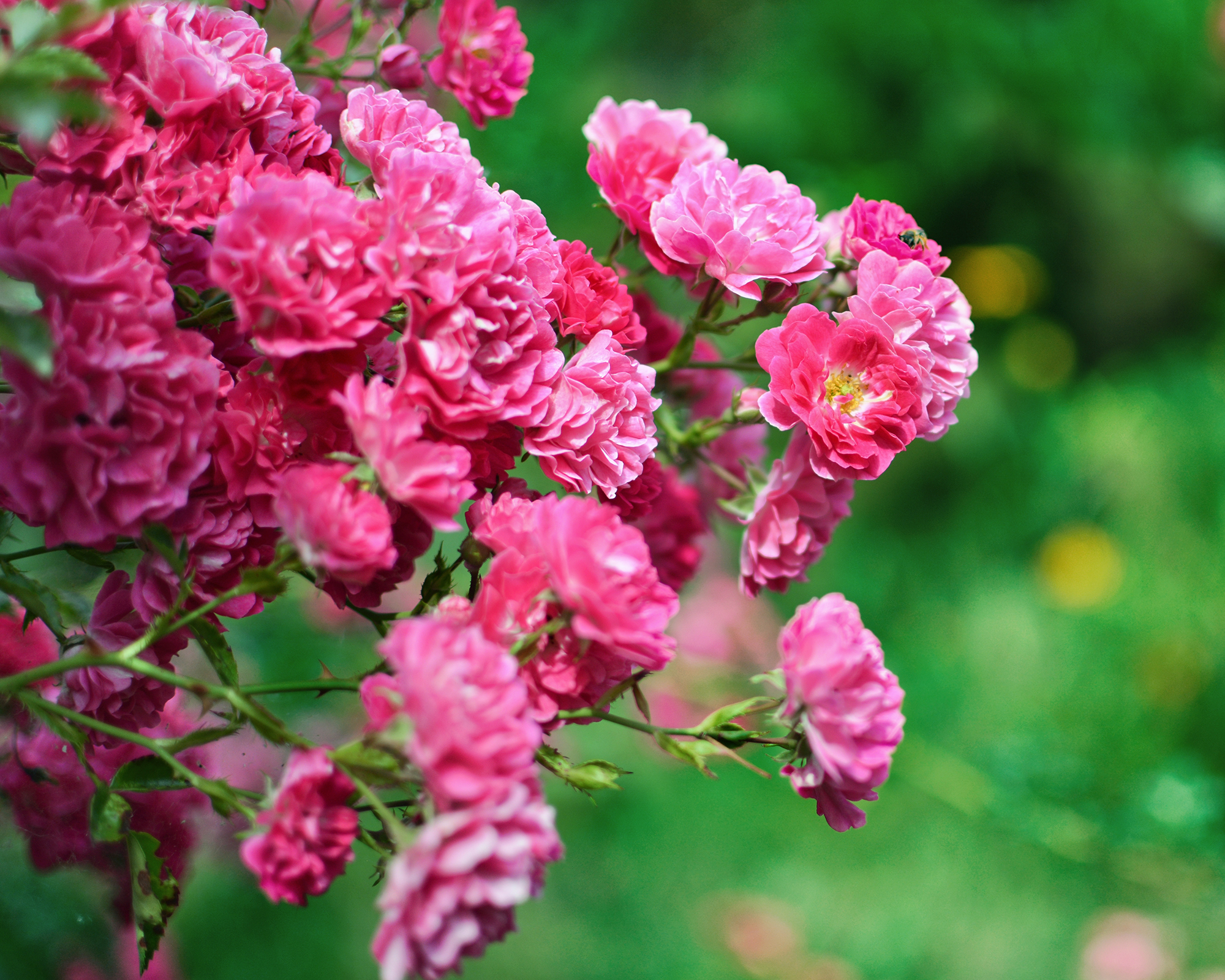
The Zephirine Drouhin rose is noted for its fabulous fragrance. It is a fast-growing rose that will require support as it gets taller and taller. The canes are nearly thornless, and the 4-inch (10cm) wide flowers are rose-pink. While the flower is composed of many petals, they are loose and bee-friendly. Zephirine can get up to 15 feet (4.5m) tall and will require training over the years. Another wonderful attribute of this rose is that it is a repeat bloomer, providing flowers through the growing season. You can buy Zephirine Drouhin at Nature Hills.
7. Tottering by Gently
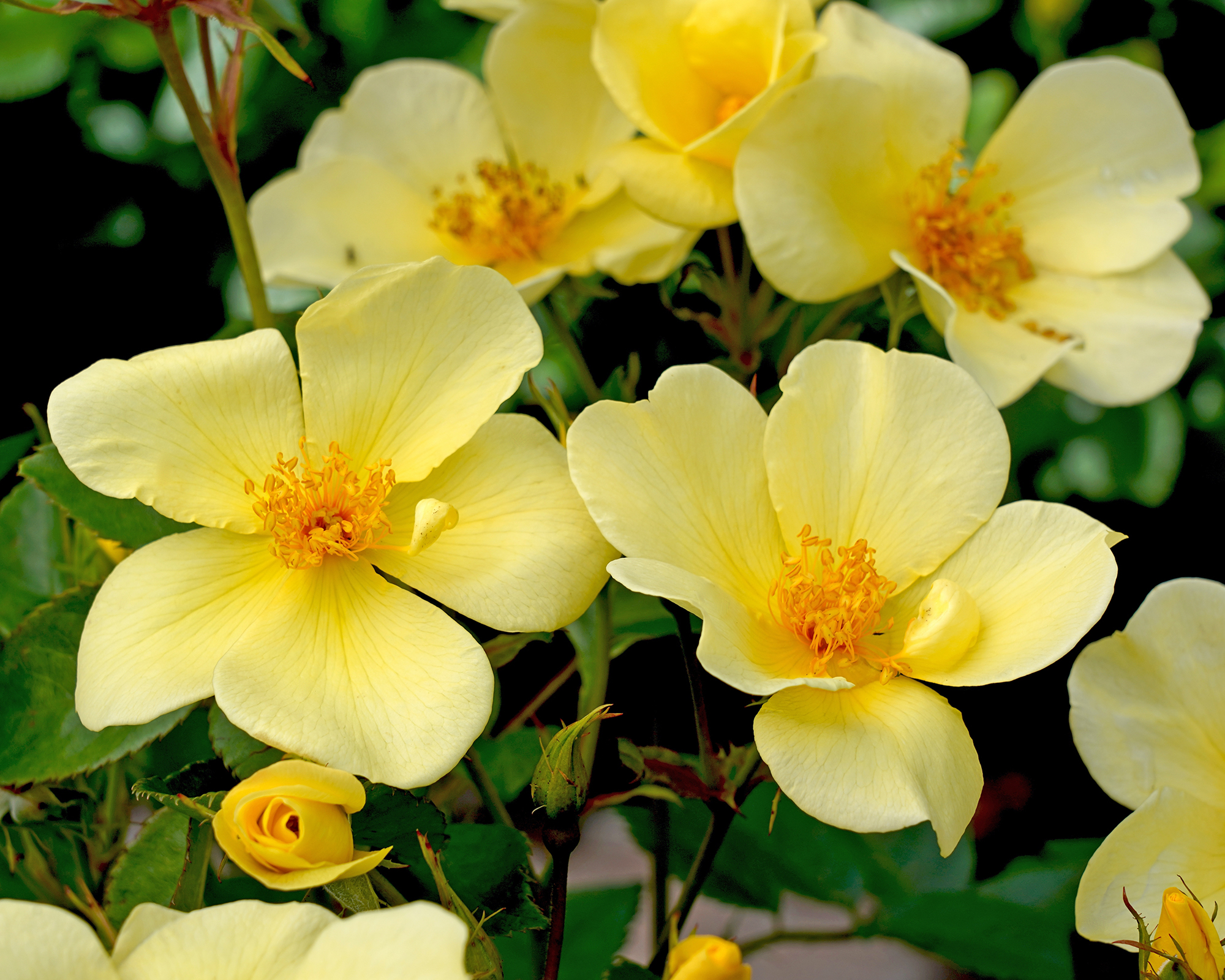
Not only does it have a charming name, but Tottering by Gently is a bee magnet. The flowers are butter yellow with five open petals. This is a repeat bloomer that will be filled all season long with large yellow blooms that exude a delicate, spicy, citrus scent. The plant is a shrub rose that can grow up to 4 feet (1.2m). Each rose will develop into a rose hip. This rose is quite winter hardy and tolerant of all areas of the garden, including partially shady sites.
8. Woods' Rose
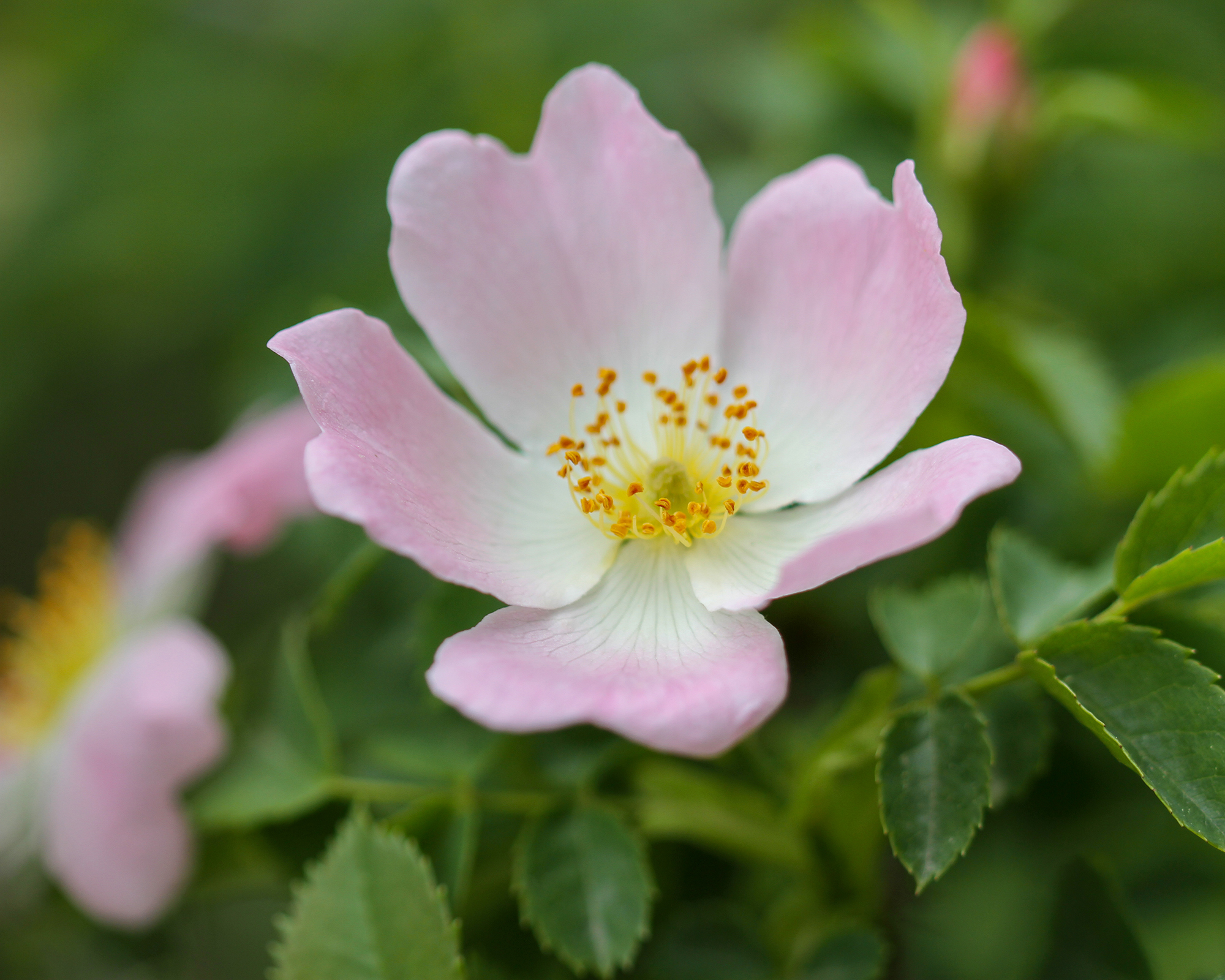
Woods' rose is native to the Pacific Northwest. The plant develops canes that are about 5 feet (1.5m) tall with flowers that are deep to light pink, depending on how old they are. This rose blooms from early spring to early summer, sending out a heavenly perfume during this time. The plant forms thickets that are useful as animal habitat. Flowers develop into deeply pink fruits that are coveted by songbirds. Woods' rose will spread over time by runners, so it will need some maintenance to keep it in check. You can buy Woods' rose seeds from Amazon.
Design Tips for a Pollinator Rose Garden
Many of these open-petaled roses resemble wild roses. They are complemented by other native blooming plants. The shrub forms make excellent informal hedging, while a climber helps hide an unsightly old shed. Smaller roses may be grown as specimens in containers.
Because roses look spectacular in mass plantings, pay careful attention to the spacing information on the nursery tag. Remember to feed your roses for the best displays, deadhead them to keep them looking their best, and prune annually in early spring.
To keep your pollinators happy, plant roses with other plants for pollinators and consider adding bee cups and bee houses, available in the Gardening Know How Shop, to provide drinking water and a safe habitat.

Bonnie Grant is a professional landscaper with a Certification in Urban Gardening. She has been gardening and writing for 15 years. A former professional chef, she has a passion for edible landscaping.